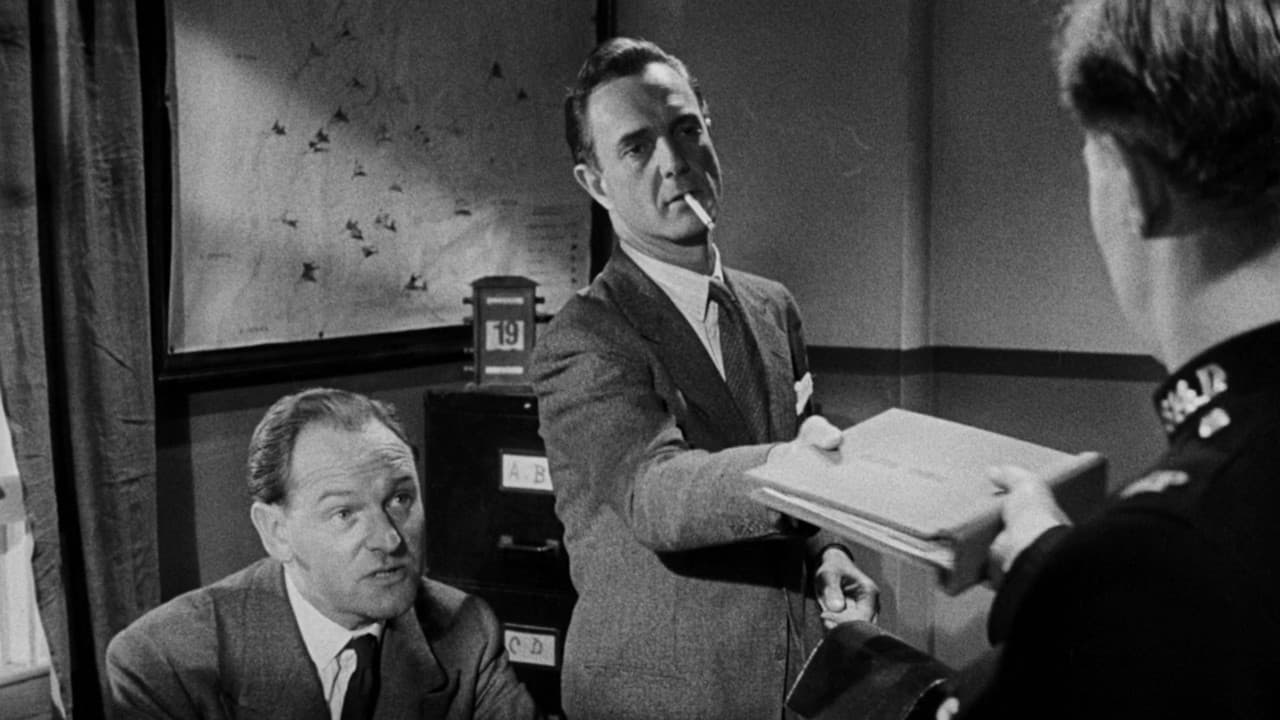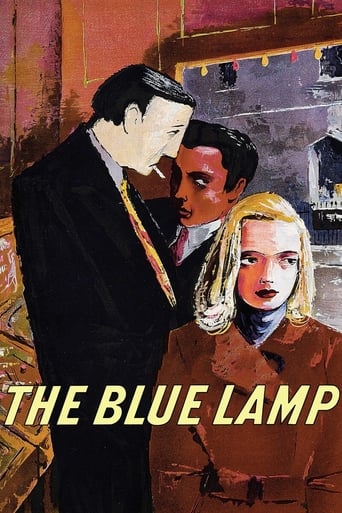

Masterful Movie
... View MoreAll that we are seeing on the screen is happening with real people, real action sequences in the background, forcing the eye to watch as if we were there.
... View MoreThe movie's neither hopeful in contrived ways, nor hopeless in different contrived ways. Somehow it manages to be wonderful
... View MoreThis is a dark and sometimes deeply uncomfortable drama
... View MoreThe Blue Lamp is directed by Basil Dearden and written by T.E.B. Clarke. It stars Jack Warner, Jimmy Hanley, Dirk Bogarde, Robert Flemyng and Peggy Evans. Music is by Ernest Irving and cinematography by Gordon Dines.Andy Mitchell is a new recruit to the London police force, old hand George Dixon takes him under his wing and shows him the ropes. When Dixon is gunned down by a hot headed crook, Mitchell, the force, and the close knit community, all rally round to catch the villain.What chiefly makes The Blue Lamp a fine watch is being able to witness the good old days of the British Bobby. It was a time when the copper was a feared and reassuring presence on the British streets, they walked the beat so everyone could sleep easy in their beds, help was but merely a whistle away.In that, this Ealing Studios production does a wonderful job, the essence is perfect, the locale and the dialect used is absolutely spot on, whilst the story is an accomplished piece that brings to notice the sad emergence of trigger happy crooks, a new breed of thug who's discipline quota was zero. It also looks nice, with a film noir sheen presented for the night-time sequences, while Dearden offers up a great action scene and closes the picture down with a tense chase finale at White City Greyhound Stadium.There's inevitably some staid performances indicative of the time, and it definitely paints the police and surrounding community through rose tinted spectacles, but they are small complaints that ultimately can't stop The Blue Lamp from being a most engaging viewing experience. 7.5/10
... View MoreThere are plenty of good reasons to watch THE BLUE LAMP, but let's face it. Nobody does crime stories of this type better than the film noirs Hollywood was churning out during the '40s, such as THE NAKED CITY. Furthermore, DIRK BOGARDE's brash and cocky punk seems like an effort to make him look like a James Cagney thug with a British accent. It's almost disconcerting to watch him in this sort of tough guy role.He does have that menacing presence and overall it's a good, crisp performance as the hood who, during a hasty and ill prepared robbery, shoots a copper and spends the rest of the film running away from the law. The sequence that has him turning up at the police station is rather puzzling in way of motivation when he becomes an immediate suspect.Excellent support from BERNARD LEE, JACK WARNER and PEGGY EVANS helps a good deal, except that Evans' hysterics seem a bit over-the-top at times. Bogarde's restraint plays against her hysterics in an effective way.Worth seeing, but not the sort of film that one would think deserves a Best Film award from BAFTA. Times have certainly changed and altered perception of crime films such as this one.
... View MoreAn excellent film for its time, but would barely make for an episode of the "Bill" these days.Officers do still have a relationship with the local underworld, that's one thing that computerisation has failed to eradicate, incredibly its still possible to Police by instinct - even these days.The other similarity is that a largely unarmed Force is still out there confronting criminals who are sometimes armed and young Officers do pay the ultimate price for their bravery - remember that.Maybe the new Ealing should make for a 21st Century re-make (Like they have with St Trinian's). A Police drama from the ordinary copper's point of view that would make a change ! Anybody in "The Job" knows that the majority of the TV Dramas bear little relation to the real world however gritty the script or artistically they are filmed. Come on Ealing I dare you.
... View MoreI can't remember which part of the film has someone saying what "The Blue Lamp" means, but I stuck with this quite good film, and I was thinking of switching off. Basically Jack Warner as PC George Dixon and Jimmy Hanley as PC Andy Mitchell are on the lookout for two criminals who have murdered an officer, and stolen a couple of things. That is pretty much all I can think of to say about the film, because that is all I remember. I think one main reason I wanted to see this film was because of James Bond's Bernard Lee as Insp. Cherry, he wasn't on often though. Also starring Dirk Bogarde as Tom Riley, Robert Flemyng as Sgt. Roberts, Peggy Evans as Diana Lewis, Patric Doonan as Spud, Bruce Seton as PC Campbell and Meredith Edwards as PC Hughes. Considered to many as a classic, for me, only worth seeing once. It won the BAFTA for Best British Film. Okay!
... View More